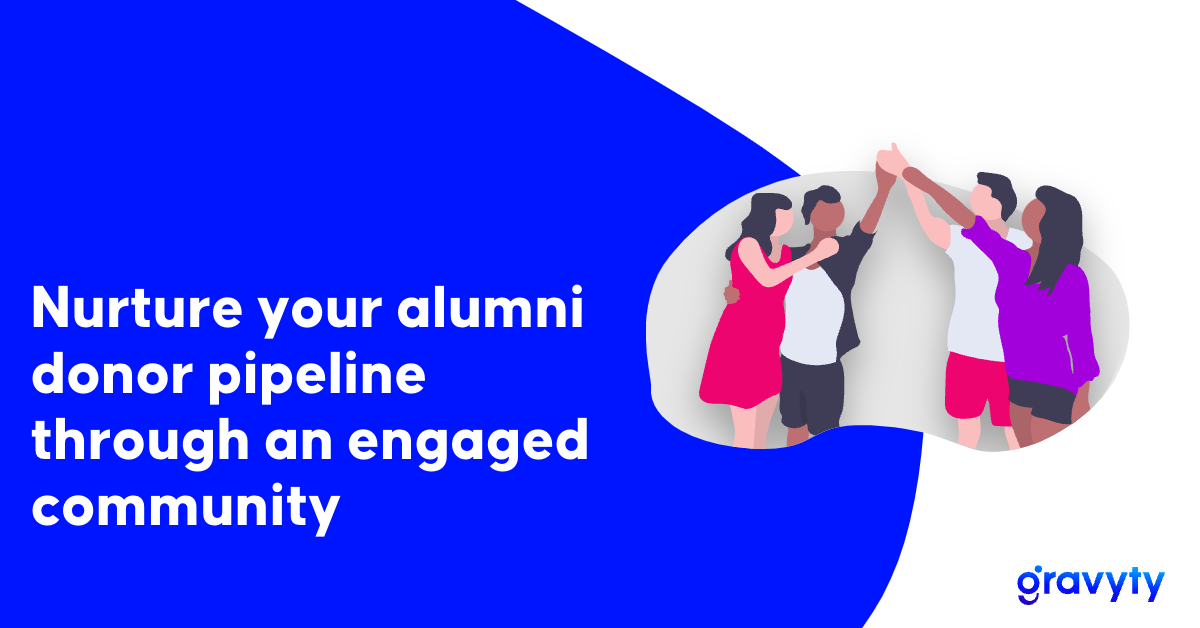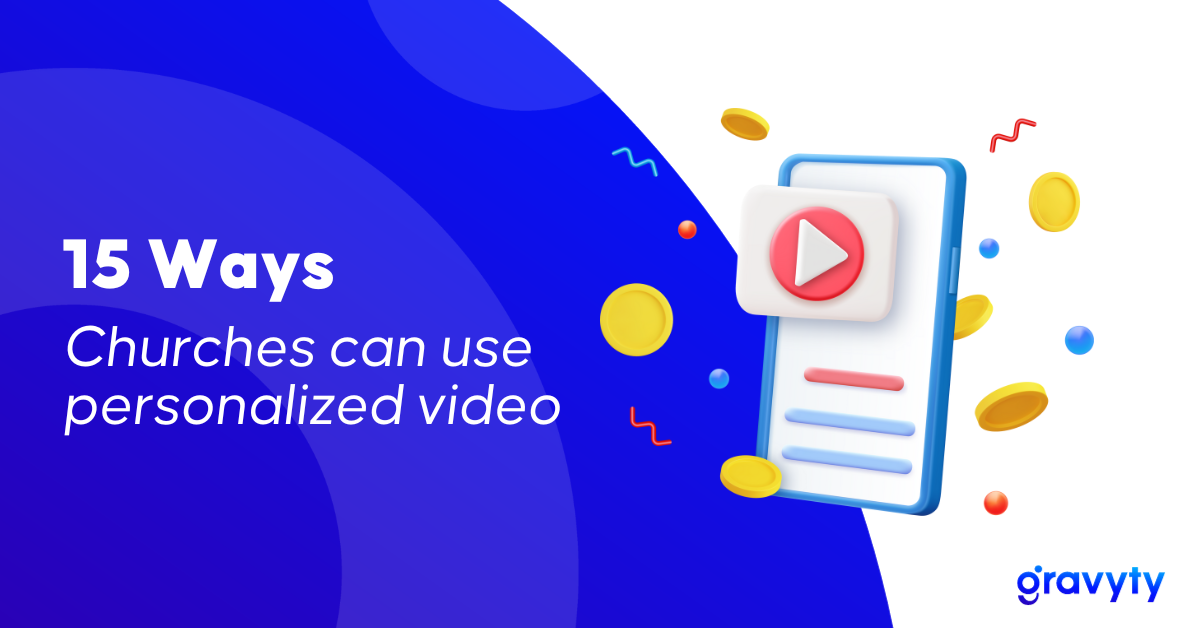Nurture your alumni donor pipeline through an engaged community

This is Part 2 in our series on growing your donor pipeline through engagement + stewardship. Missed Part 1? Read Part 1 here.
The more engaged a potential donor is with your organization, the more likely it is that they will make a gift. However, donor engagement is not—and should not be— entirely about pursuing your next buck. When fundraising professionals engage with the community, their main focus should be to build long-term and meaningful connections.
Community engagement is about incentivizing your community members to get more involved with your organization. One of the main pillars of community engagement is communication. It is only when your constituents are aware of your activities and are hearing from you regularly that they can make the decision to actively participate in your plans and projects.
While community engagement is primarily about getting your intended message across, it can also work the other way, providing valuable opportunities for you to learn more about your members. Whether this happens through online or in-person events, by sending out questionnaires, or by directly asking your audience questions, don’t miss these valuable opportunities to learn more about the people who are so vital to your organization’s future success.
The following tips will guide your efforts at growing your donor pipeline through community engagement.
Make a communications plan/template
Regular and clear communication is the cornerstone of any great relationship, and donors are no exception. There are many reasons to communicate with your donors beyond simply asking for a donation. You might want to update them about how a project they donated to is progressing, thank them for a recent gift, or wish them a happy anniversary or Merry Christmas. You also might like to share news, tell them about some upcoming activities or ask for their feedback on an event or program.
Communication is so important that you don’t want to leave it to chance. One of the best ways to ensure that your constituents hear from you regularly but without being overloaded with requests or bored by repetitive messages is to draft a communications plan or template at the beginning of the year.
Following a donor communications plan is a surefire way to ensure that your communications throughout the year remain varied and interesting. It also allows you to plan ahead and make sure you’re leaving enough time to communicate about any important events that are coming up. You might need to adapt or update your plan slightly as the year progresses, but you’ll be surprised at how much communication content can actually be planned upfront.
Looking for more ideas and inspiration to make your communications more interesting and varied?
Download Gravyty’s 2023 donor communication plan:
Personalize your outreach
There is a world of difference between mass mailings and personal communications. While most people tend to hit delete the second they see a standard generic newsletter, they are more likely to pause and read on if they see some more personal information. By personal, we are not just talking about the recipient’s name in the email title—while this is a nice touch, most email management software solutions can do this, so it won’t make you stand out in a big way. To make your communications feel genuinely personal, you need to go a bit deeper.
If you’re sending a “thank you,” then refer to the specific fund they donated to and the amount gifted, so they know you are paying attention. Refer to any recent conversations or meetings you had with the donor, or make note of their location if relevant—i.e., by saying, “we are reaching out to you as a valued member of our community in Boston.” The more specifically you can personalize your communications, the more effective they will be. This is especially critical for newer community members who are in the early stages of getting to know your organization.
Personalized communication can be daunting for educational institutions—especially those with a small fundraising or alumni relations team. For this reason, you might want to explore digital fundraising tools designed to cut down on the work involved in crafting impactful, personalized communications.
Raise from Gravyty is an AI-powered fundraising tool that does the hard work of scouring your CRM for useful personal details for you. Using the donor data you have stored, Raise crafts a personalized email and leaves it in the fundraiser’s mailbox, ready for them to review and send as needed. Tools like Raise enable even a very small team to reach out personally to a large number of community members.
Share what makes your community unique
You’re not the only person vying for the attention of your donors, and it pays to remember this when reaching out. Instead of sending out a general summary of the year’s activity, think about what makes you unique and try to show that in your communications.
For example, use video to bring your communication to life. Instead of an emailed impact story, ask a beneficiary of one of your initiatives to record a video where they explain the impact this gift has made on their lives. You can use Gratavid from Gravyty to solicit emails from various stakeholders and store them ready to be sent out at the appropriate time. Having a bank of useful and personalized video messages can be a real boon for your organization.
Another idea is to ask people who are already deeply invested in your organization to write (or video record) a referral. This could be volunteers, staff, students, or another stakeholder. A genuine referral from a real member of your community will speak volumes.
Focus on cultivation, not transaction
As a fundraiser, your fundraising target is never far from your mind, but when trying to build genuine relationships, it’s critical to take your eye off the total—just for a little bit. Organizations that send out too many donation requests—or only requests and solicitations without other content—are perceived as spammy and unreliable.
Show your audience that you care about them and your growing relationship by reaching out with a varied menu of interesting content, including news, greetings, educational or inspiring information, invitations to events and more. Invite your community to share in your successes by showcasing the results of your current campaign without including an ask at the end. Similarly, display a graph of this year’s growth compared to last year’s and, again, skip the ask!
Another great way to build relationships is by providing genuine value. Think about what your constituents might need and try to provide it. For example, create a guide on how to prepare for exams, choose your next career move or find a suitable mentor. You could also offer to make connections or introductions to help alumni with their professional development.
Provide data
Facts and figures add credibility to your organization and help to build trust. For this reason, it’s important to collect data throughout the year—whether that be donation tallies, the number of people impacted by your programs or anything else you want to showcase. Backing up statements about your progress or success with tangible numbers will have a greater impact than making vague proclamations. Fundraising software such as Advance, Graduway or Raise from Gravyty can be a great help to this end as data is automatically collected and fundraisers can simply generate reports to display the desired data.
An engaged community is a giving community
Take the time to plan your communications for the year up front, bearing in mind the points in this article, and you are sure to see a boost in engagement. Gravyty’s fundraising solutions help you personalize your communications, reach more people impactfully, collect and use data effectively and alleviate the burdens on your staff members. Get in touch today to book a consultation.



